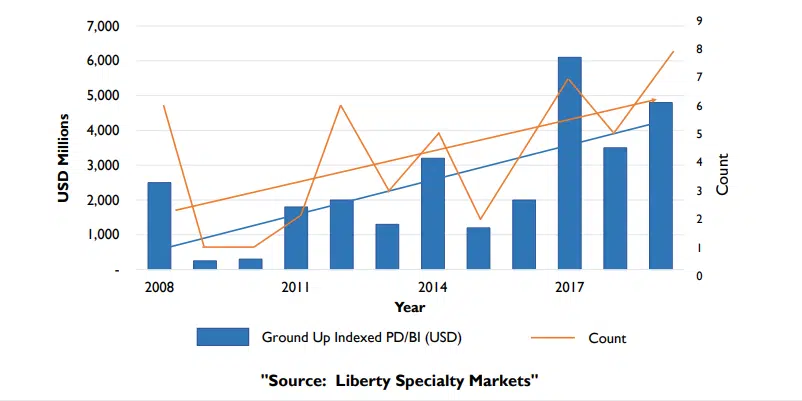“The Three Questions” is a short story written by Leo Tolstoy in 1903. This story adopts the form of a parable and revolves around a king’s quest to discover the answers to what he deems the three most significant inquiries in life.
In the tale, the king resolves that he will be equipped to handle any situation if he obtains the answers to three crucial questions.
In this article, we will provide you with three key questions that should be integrated into your process safety management program. These questions will effectively equip you to deal with any process safety situation.
Introduction
In today’s rapidly evolving manufacturing landscape, ensuring the safety and efficiency of your operations is paramount. But what many organisations fail to realise, however, is that process safety management (PSM) will play a crucial role in achieving this.
A comprehensive approach to process safety management focuses on preventing and mitigating process-related hazards that can lead to accidents, injuries, and environmental damage from the very top of an organisation.
By implementing effective PSM strategies, businesses can safeguard personnel, assets, new and modified facilities, and surrounding communities from the potential hazards related to processing activities.
Historical process safety incidents
In the past few decades, there have been several process safety incidents that have had significant repercussions for the industry.
These incidents have led to considerable health hazards, death, destruction, prosecution, environmental and property damage, and massive damage to brands.
Below is a range of historical process safety incidents that have had real-world effects on companies working in the process industry.
Flixborough
Flixborough (UK), in 1974, was the largest peacetime explosion seen in the UK (until the Buncefield explosion in 2005). Flixborough changed UK legislation.
Bhopal
Bhopal (India), in 1984, was the worst case of loss of life resulting from a process safety incident. More than 5000 people were killed and tens of thousands had their lives ruined.
Hickson and Welch
An explosion at Hickson & Welch (UK), in 1992, killed multiple people.
Although Hickson & Welch was a relatively small company and the fine imposed wasn’t comparatively large, the reputational damage destroyed Hickson & Welch.
Nobody wanted to work with them, for them or wanted to buy their products following this incident.
Although this incident was reasonably small in the grand scheme of other process safety incidents, it was significant enough to destroy the brand.
Safety in the process industries
We have recently seen an upturn in the number of process safety incidents. The data displayed below in Figure 1 displays data from 2008 to 2017.

Figure 1. Process Safety Incidents
The count is the most crucial axis to look at as it clearly displays a worrying trend – an increase in the number of process incidents.
In the news recently (2023), there have been processing-related accidents in the USA, Mexico and Australia.
Process safety management: a closer look
PSM encompasses a range of systematic and proactive process safety management systems.
These systems should aim to collect and detail process safety information alongside risk analysis strategies that are aimed at identifying, evaluating, and managing a range of process safety risks and hazards.
This includes the implementation of robust standards, procedures, and controls to prevent incidents and maintain operational integrity.
Other elements that are covered under PSM can include process design, technology selection, equipment maintenance, process safety information, emergency planning and preparedness, and workforce training.
By integrating these features, organisations can create a culture of safety and minimise the risks associated with their operating procedures.
What are the three process safety management questions?
In essence, process safety management can be answered in the following three questions. These three questions, however, will create more questions that need answering. We have incorporated a couple below.
Do you understand what can go wrong?
- What are the potentially hazardous chemicals and materials used in your process?
- What are the hazards associated with your most dangerous chemicals and substances?
- What are the effects of different materials in hazardous zones?
- Are there any changes that could occur when you handle, store or process materials?
- If an accident does occur, what’s going to happen as a result? Are the consequences going to be to people, company finances or the environment?
What safeguards do you need to have in place?
- What have you got in the operating phase of the business that prevents those hazards from being realised as losses?
- What other process safety information or management information have you got that prevents accidents from happening in the first place?
- Is there incident investigation or near-miss documentation available?
- Is there a disciplined framework in place?
- Are there process safety performance indicators in place and up to date
- What have you got in your business to prevent risk?
- Do you have installation, prevention, control, and mitigation measures?
How do you know your protective measures are effective?
- Are your safeguards and process safety procedures, policies and practices effectively reducing risk?
- Do your process safety management systems incorporate quality control measures?
- Are your suppression systems active? Would you be able to effectively deal with an accidental release of toxic material?
Knowing that your protective measures are effective is the question that companies frequently have the biggest problem answering.
Ultimately, if you don’t know if your protective systems are going to work for you, it’s as good as not having them there in the first place.
How to start answering the three questions
1) Do you understand what can go wrong?
To understand what can go wrong, the best tool to use would be a hazard identification exercise like a Process Hazard Analysis (PHA) or another form of hazard identification tool/workshop. This may include a Hazard Identification Study (HAZID), a Hazard and Operability Study (HAZOP) or a Layers of Protection Analysis (LOPA).
To understand how the extent and severity of a potential incident, determination studies can be applied via tools such as consequence modelling.
Ultimately, you should always think about what can go wrong, and how bad the consequences could be.
If you don’t map this you won’t know what you’re looking at, and you won’t know what your safeguards are and how good they must be.
2) What safeguards do you need to have in place?
For this particular question, three words: prevent, control, and mitigate.
They are extremely important as they represent a hierarchy of control.
You should always aim to prevent an incident from happening.
If that doesn’t work, you control the rate of release once you’ve got a loss of containment.
If that doesn’t work, you mitigate the consequences.
It is, in essence, a chain of events that you can interrupt at various stages.
These safeguards are achieved through procedures that you employ i.e. checks and checklists, operating plans, safety policies, and evacuation procedures.
It should also include policies that sit behind your procedures.
Without policies, you’re not resourcing correctly.
Process equipment and management systems
Management systems must be implemented into the life cycle of your process equipment.
It will ensure that they’ve been properly designed, constructed, installed, operated, inspected, and maintained throughout.
Installing a pressure relief valve on the top of a reactor, for example, is one thing, but making sure that it remains valid throughout its lifetime, that it is correctly sized that it is made out of the right material will make up an important part of your process safety management program.
3) How do you know that your protective measures are effective?
For an entire organisation to learn and improve there must be some form of performance metric.
There must be a way to measure and audit systems as they are intended. But this must come from the very top of an organisation, otherwise, nothing changes.
There needs to be an impetus towards a process safety strategy.
Management must take an interest in this, otherwise, nothing is going to happen. Process safety requires more than simply following legislative requirements, it requires organisations to continuously improve.
This is a core value for any business; if a business does not continuously improve, it will not be sustainable.
Conclusion
“The Three Questions” by Tolstoy serves as a thought-provoking parable that prompts us to reflect on the pursuit of knowledge and wisdom. Just like the king in the story, we too can benefit from seeking answers to the most significant inquiries in our own lives.
In the context of process safety management (PSM), integrating three key questions into your program can be immensely valuable.
These questions act as a guiding framework to equip you with the necessary tools to handle any process safety situation effectively.
There is extraordinarily little new in process safety.
Events happen, investigations occur, and root causes are discovered, but there is little new that comes out of it.
Even still, you must understand what can go wrong.
Addressing the above three questions is essential for establishing and supporting a risk based process safety management program within your organisation.
By formulating, evaluating, and updating responses to these questions, organisations can determine whether their current process safety strategies and safety management systems are satisfactory, whether protective measures are effective, and if there are any areas that require further improvement through a continual improvement approach.



